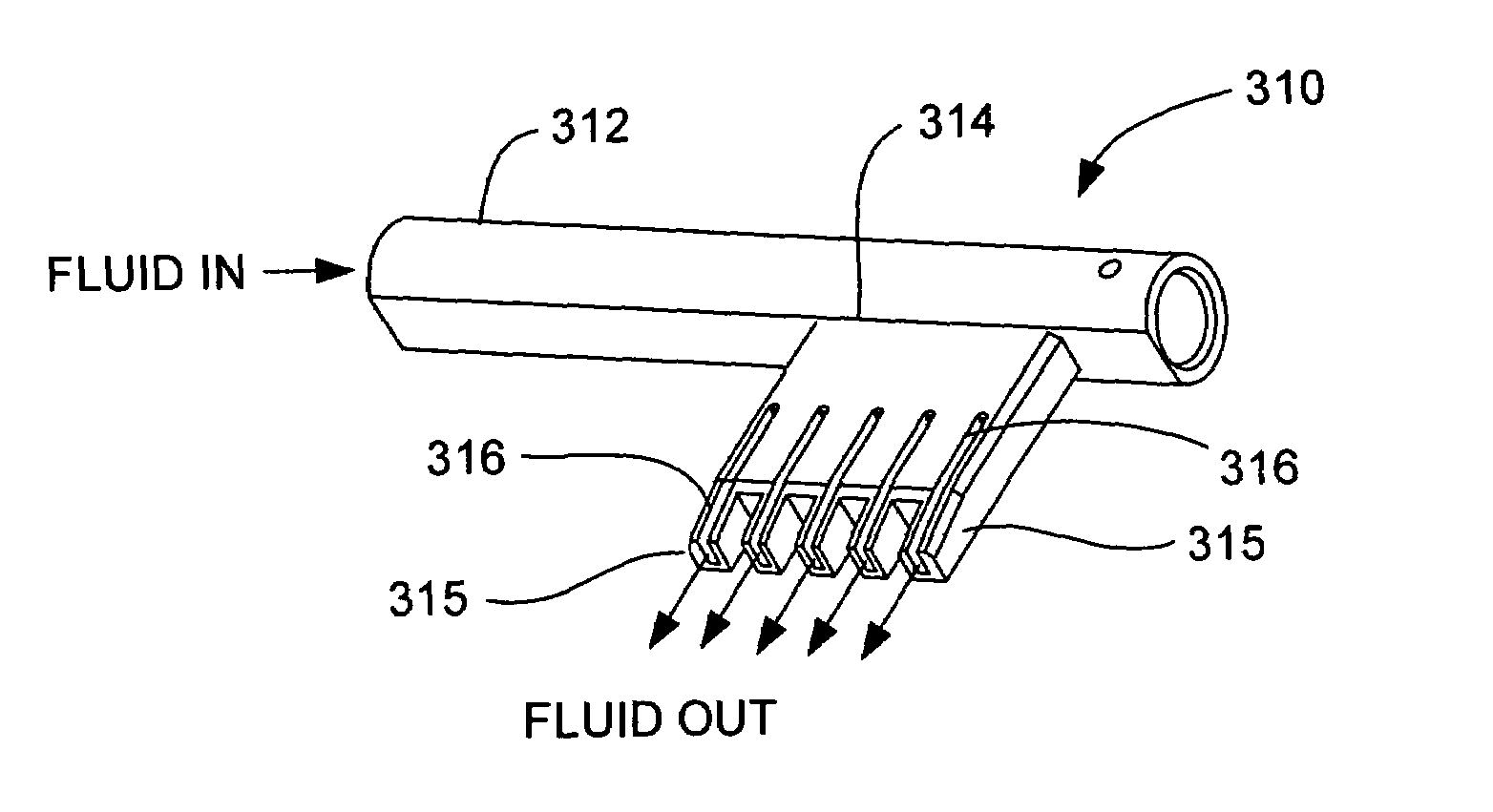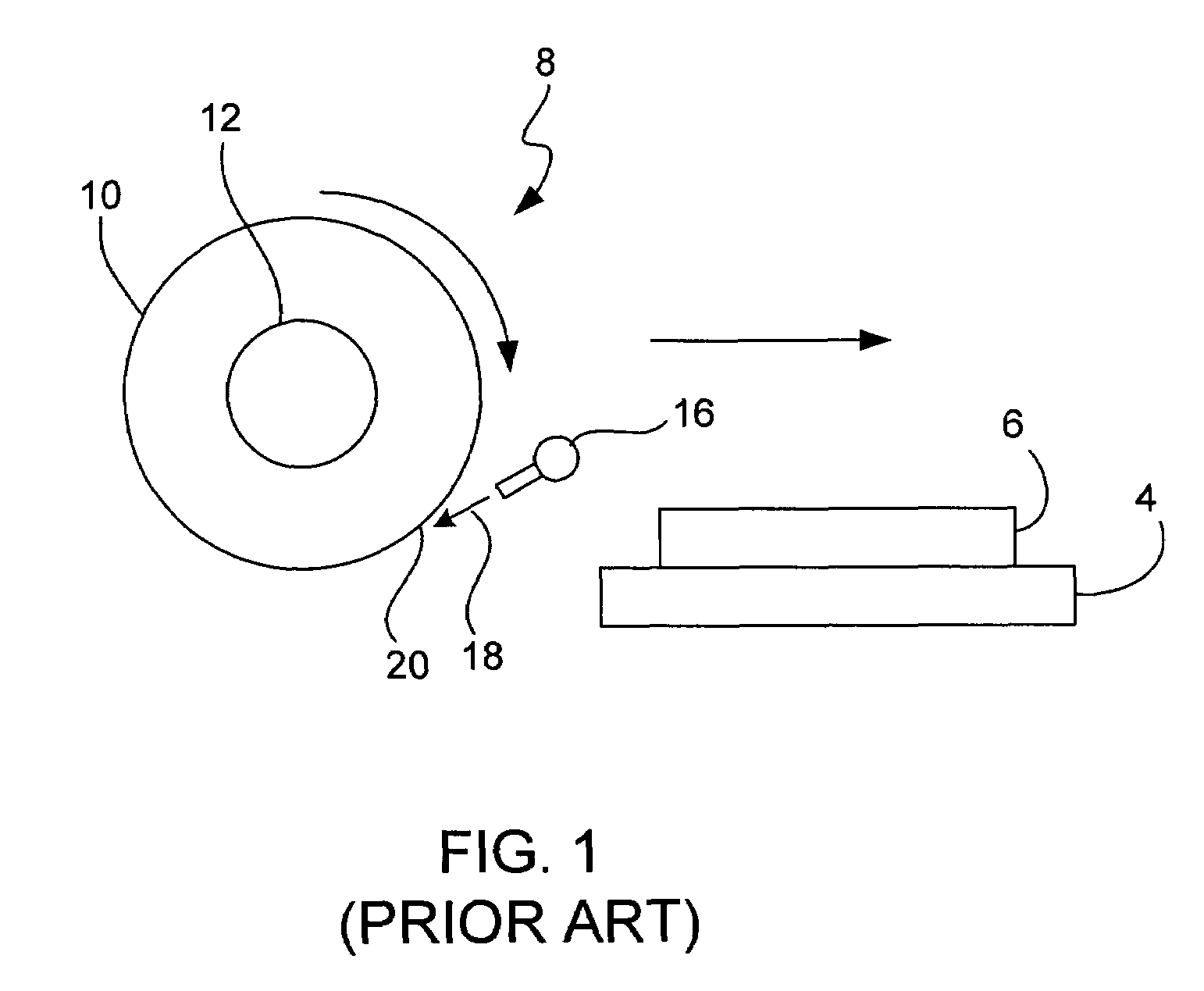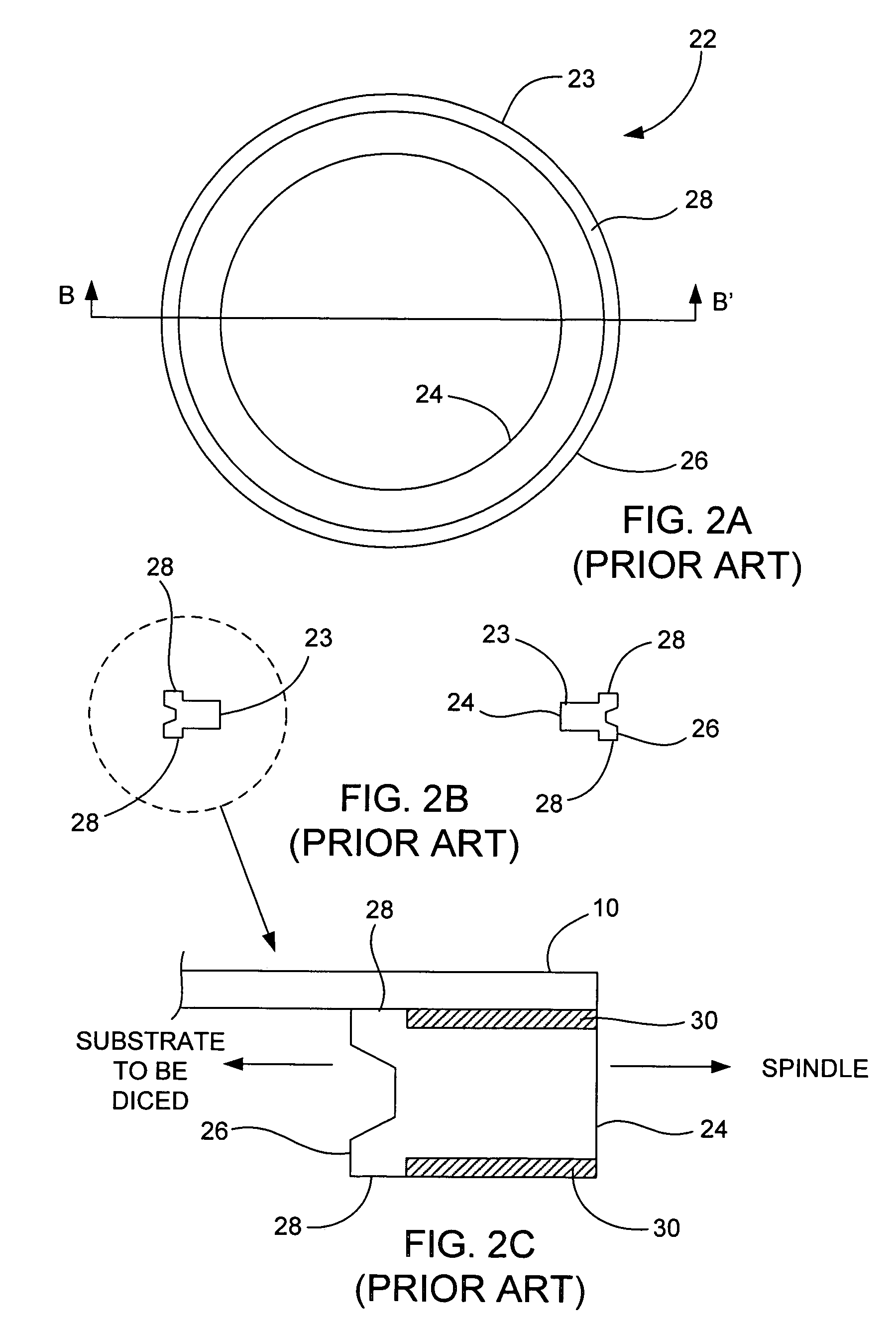Saw singulation
a technology of integrated circuit processing and singulation, which is applied in the direction of metal sawing accessories, grinding machine components, manufacturing tools, etc., can solve the problems of stifling the effectiveness of saw singulation, and affecting the dicing process
- Summary
- Abstract
- Description
- Claims
- Application Information
AI Technical Summary
Benefits of technology
Problems solved by technology
Method used
Image
Examples
Embodiment Construction
[0031]The present invention generally relates to improved systems and methods for singulating a substrate into a plurality of integrated circuit devices (e.g., dies, unpackaged chips, packaged chips, and the like). The system is capable of overcoming the drawbacks mentioned above. Particularly, reducing blade breakage, improving cut quality, decreasing part movement, enabling higher feed rates, extending blade life and increasing throughput. The system described herein is particularly suitable for singulating leadless packages such as QFN. Although directed at leadless packages, the system is also suitable for singulating other surface mount devices such as chip scale packages, ball grid arrays (BGA), flip chips, and the like.
[0032]One aspect of the invention corresponds to a fixture that holds the substrate during the dicing process. The fixture includes a nest that eliminates the presence of locator pins, which can prevent debris from exiting the cutting area, i.e., the debris get...
PUM
| Property | Measurement | Unit |
|---|---|---|
| flatness | aaaaa | aaaaa |
| height | aaaaa | aaaaa |
| width | aaaaa | aaaaa |
Abstract
Description
Claims
Application Information
 Login to View More
Login to View More - R&D
- Intellectual Property
- Life Sciences
- Materials
- Tech Scout
- Unparalleled Data Quality
- Higher Quality Content
- 60% Fewer Hallucinations
Browse by: Latest US Patents, China's latest patents, Technical Efficacy Thesaurus, Application Domain, Technology Topic, Popular Technical Reports.
© 2025 PatSnap. All rights reserved.Legal|Privacy policy|Modern Slavery Act Transparency Statement|Sitemap|About US| Contact US: help@patsnap.com



